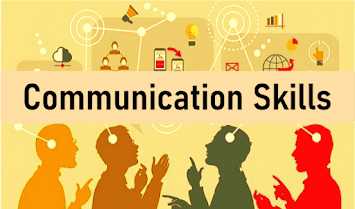Featured
- Get link
- X
- Other Apps
Communication Skill
Communication skills are essential for effective and meaningful interactions with others. They involve the ability to convey information, listen actively, and engage in clear and constructive dialogue. Here are some key aspects of communication skills:
Clear and Concise Expression: Communicate your thoughts and ideas in a clear and concise manner. Use simple and understandable language, avoid jargon or technical terms when speaking to non-experts, and organize your thoughts logically.
Active Listening: Actively listen to others by giving them your full attention and focusing on what they are saying. Avoid interrupting and demonstrate your engagement through verbal and nonverbal cues, such as nodding, maintaining eye contact, and providing appropriate responses.
Nonverbal Communication: Pay attention to your nonverbal cues, including facial expressions, body language, and tone of voice. Ensure that your nonverbal communication is aligned with your verbal message, as it can greatly impact how your message is received and understood.
Empathy and Understanding: Seek to understand others' perspectives and emotions, and show empathy towards their experiences. Put yourself in their shoes and validate their feelings to foster effective communication and build stronger relationships.
Clarification and Feedback: Seek clarification when necessary to ensure understanding. Ask questions for clarification or elaboration, and provide constructive feedback to encourage open dialogue and mutual understanding.
- Get link
- X
- Other Apps



Comments
Post a Comment